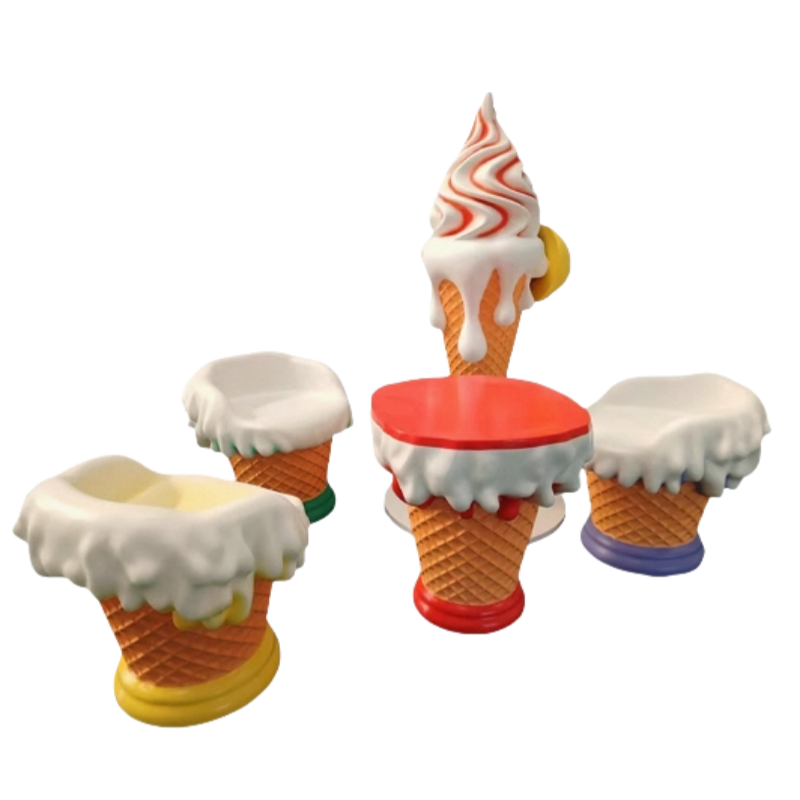Transforming Interior Spaces with Modern Sculptural Elements
The world of interior design continues to evolve, and fiberglass sculpture has emerged as a groundbreaking medium that's revolutionizing how we approach indoor aesthetics. These versatile art pieces combine the visual appeal of traditional sculptures with the practical benefits of lightweight, durable materials, making them increasingly popular among designers and homeowners alike. The seamless integration of fiberglass sculpture into interior spaces creates striking focal points while maintaining a contemporary edge that complements various design styles.
The marriage between artistic expression and functional design has never been more apparent than in the realm of fiberglass sculptural elements. These pieces not only serve as conversation starters but also contribute to the overall spatial harmony of interior environments. As we delve deeper into this fascinating aspect of modern décor, we'll explore how these innovative art forms are reshaping our understanding of indoor aesthetics.
The Versatility of Fiberglass as a Sculptural Medium
Material Properties and Advantages
Fiberglass sculpture offers an impressive array of benefits that make it ideal for indoor applications. The material's lightweight nature allows for installation in locations where heavier traditional materials like bronze or marble would be impractical. Additionally, fiberglass exhibits remarkable durability, resistance to environmental factors, and minimal maintenance requirements, ensuring that these artistic investments maintain their beauty for years to come.
The moldability of fiberglass enables artists to create intricate details and complex forms that might be challenging or impossible with other materials. This flexibility in design opens up endless possibilities for creative expression, allowing sculptors to push the boundaries of conventional art forms while maintaining structural integrity.
Design Possibilities and Artistic Freedom
The versatility of fiberglass as a medium extends beyond its physical properties to encompass vast creative potential. Artists can achieve smooth, seamless surfaces or incorporate texture and pattern into their works. The material can be painted, finished with metallic coatings, or left in its natural state to create different aesthetic effects. This adaptability makes fiberglass sculpture an excellent choice for both abstract and representational pieces.
Contemporary artists are increasingly turning to fiberglass for large-scale installations and statement pieces that transform interior spaces. The material's ability to be molded into flowing, organic forms or precise geometric shapes allows for the creation of sculptures that complement any design aesthetic, from minimalist modern to ornate classical styles.
Strategic Placement and Interior Design Integration
Creating Focal Points and Visual Flow
The strategic placement of fiberglass sculpture within an interior space can dramatically influence the room's overall impact. When positioned thoughtfully, these pieces can serve as powerful focal points that draw the eye and guide movement through the space. Consider placing a fiberglass sculpture in an entryway to create a striking first impression, or use it to anchor a large living area where it can be appreciated from multiple angles.
The relationship between the sculpture and its surrounding environment is crucial. Proper lighting, complementary furniture arrangement, and consideration of sight lines all play essential roles in maximizing the visual impact of fiberglass sculptural elements. The lightweight nature of the material allows for easier experimentation with placement until the perfect position is achieved.
Scale and Proportion Considerations
Selecting the appropriate size for a fiberglass sculpture requires careful consideration of the room's dimensions and existing design elements. Large-scale pieces can make bold statements in spacious areas, while smaller sculptures might be better suited for intimate spaces or as part of a curated collection. The proportional relationship between the sculpture and its environment is key to achieving a balanced, harmonious interior.
Understanding the principles of scale helps in creating dynamic spatial relationships that enhance rather than overwhelm the room. Fiberglass sculptures can be commissioned or selected in sizes that perfectly complement the intended space, ensuring optimal visual impact while maintaining practical functionality.
Maintenance and Longevity of Fiberglass Art
Preservation Techniques
Maintaining the beauty of fiberglass sculpture is relatively straightforward, but proper care is essential for long-term preservation. Regular dusting with soft, non-abrasive materials prevents the accumulation of debris that could dull the surface. For more thorough cleaning, mild soap solutions can be used, followed by careful drying to prevent water spots or damage to finishes.
Environmental factors such as direct sunlight and temperature fluctuations should be considered when placing fiberglass sculptures. While the material is inherently durable, protecting it from extreme conditions will help maintain its aesthetic appeal and structural integrity over time.
Professional Care and Restoration
Despite their durability, fiberglass sculptures may occasionally require professional attention to address wear or damage. Working with experienced conservators who understand the material's properties ensures that any necessary repairs or restoration work is carried out appropriately. Professional maintenance services can also provide protective treatments that enhance the longevity of the piece.
Regular assessment of the sculpture's condition helps identify potential issues before they become significant problems. Establishing a relationship with qualified art conservation professionals ensures that your investment in fiberglass sculpture remains protected and continues to enhance your interior space for years to come.
Frequently Asked Questions
How does weather affect indoor fiberglass sculptures?
Indoor fiberglass sculptures are generally well-protected from weather-related damage, but controlling indoor climate conditions is still important. Maintain consistent temperature and humidity levels to prevent potential stress on the material. While fiberglass is highly resistant to environmental factors, extreme variations can affect the finish or structural integrity over time.
What lighting works best with fiberglass sculptures?
LED lighting is often ideal for illuminating fiberglass sculptures as it produces minimal heat and can be precisely directed. Consider using adjustable spotlights or track lighting to highlight specific features of the sculpture. Natural lighting can also enhance the appearance of fiberglass pieces, but be mindful of direct sunlight exposure which may affect certain finishes.
Can fiberglass sculptures be customized after installation?
While fiberglass sculptures can be modified post-installation, it's best to work with professional artists or restorers for any customization. The material can be refinished, repainted, or altered, but these changes should be executed by experts who understand the proper techniques and materials to ensure the best results and maintain the sculpture's integrity.


